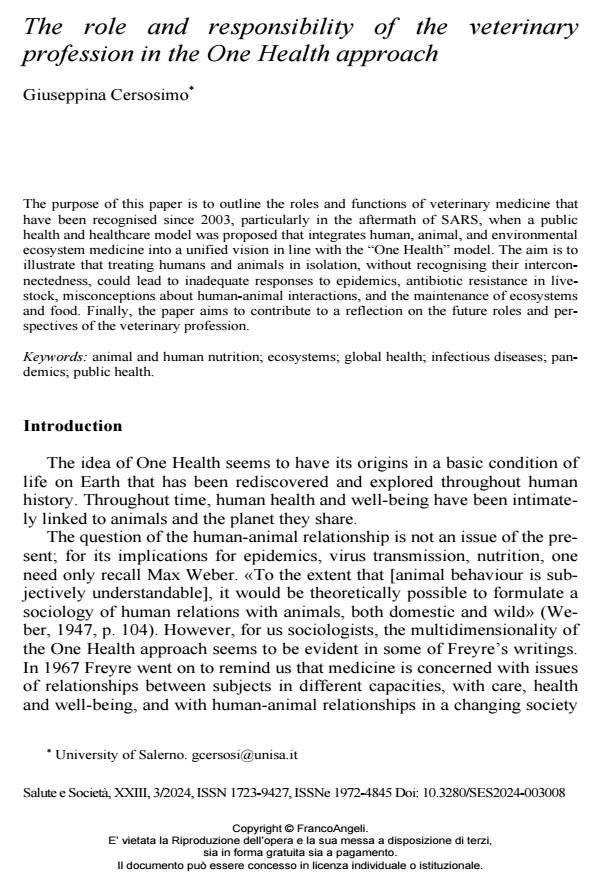The role and responsibility of the veterinary profession in the One Health approach
Titolo Rivista SALUTE E SOCIETÀ
Autori/Curatori Giuseppina Cersosimo
Anno di pubblicazione 2024 Fascicolo 2024/3
Lingua Inglese Numero pagine 14 P. 117-130 Dimensione file 189 KB
DOI 10.3280/SES2024-003008
Il DOI è il codice a barre della proprietà intellettuale: per saperne di più
clicca qui
Qui sotto puoi vedere in anteprima la prima pagina di questo articolo.
Se questo articolo ti interessa, lo puoi acquistare (e scaricare in formato pdf) seguendo le facili indicazioni per acquistare il download credit. Acquista Download Credits per scaricare questo Articolo in formato PDF

FrancoAngeli è membro della Publishers International Linking Association, Inc (PILA)associazione indipendente e non profit per facilitare (attraverso i servizi tecnologici implementati da CrossRef.org) l’accesso degli studiosi ai contenuti digitali nelle pubblicazioni professionali e scientifiche
The purpose of this paper is to outline the roles and functions of veterinary medicine that have been recognised since 2003, particularly in the aftermath of SARS, when a public health and healthcare model was proposed that integrates human, animal, and environmental ecosystem medicine into a unified vision in line with the “One Health” model. The aim is to illustrate that treating humans and animals in isolation, without recognising their interconnectedness, could lead to inadequate responses to epidemics, antibiotic resistance in livestock, misconceptions about human-animal interactions, and the maintenance of ecosystems and food. Finally, the paper aims to contribute to a reflection on the future roles and perspectives of the veterinary profession.
Parole chiave:animal and human nutrition; ecosystems; global health; infectious diseases; pandemics; public health.
Giuseppina Cersosimo, The role and responsibility of the veterinary profession in the One Health approach in "SALUTE E SOCIETÀ" 3/2024, pp 117-130, DOI: 10.3280/SES2024-003008